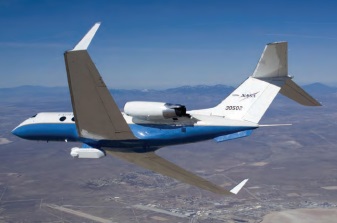Chapter: Avionics and Instrumentation Technologies, new invention technology, Research project papers,
Platform Precision Autopilot (PPA)

Platform Precision Autopilot (PPA)
Armstrong innovators have developed a flight control system that
allows an aircraft to maintain an attitude and heading within 5 meters of a
desired position. The PPA is a digital system that augments the legacy analog
Gulfstream III (G-III) autopilot system. The PPA consists of an embedded
microcontroller-based flight computer and navigation algorithms that
use externally
provided attitude and differential GPS information to generate aircraft control
commands. The system features a unique use of a controller area network (CAN)
system and design interface to imitate an instrument landing system (ILS) and
enable precise repeat-pass flights. This proven technology has been flying on
Armstrong's G-III aircraft for more than 5 years.
Work to date: The technology was
developed for NASA's Uninhabited Aerial Vehicle Synthetic Aperture
Radar (UAVSAR) program to aid in precise repeat-pass scientific missions. The
PPA enables the G-III aircraft to perform missions that are more complex and
demanding than ever.
Looking ahead: The team is working to
establish an F/A-18 interface for pilot pitch queuing in support of
launch vehicle adaptive control research. A potential NASA application is the
Stratospheric Observatory for Infrared Astronomy (SOFIA) mission, where the PPA
would provide precision automated heading control. Additionally, the PPA is
being revised to support the Coordinated Trajectories project by hosting a
peak-seeking control algorithm.
Benefits
Precise navigation: Controls an aircraft within
a specified tolerance
Compact
and low power: Measures 3x5 inches and operates at less than 5
watts
Applications
Scientific and
military surveillance Terrain mapping
Avionics and Instrumentation Technologies
Armstrong innovators design and integrate data acquisition
systems for research, support, and one-of-a-kind platforms. In many cases,
these systems leverage commercial off-the-shelf parts to keep costs low and
ease integration with legacy systems. At the same time, these cutting-edge data
systems are finding innovative ways not only to collect data efficiently but
also to flexibly configure collection parameters.
Designed for aerospace applications, many of these innovations
can benefit numerous industries in a variety of situations where data
optimization is critical, such as manufacturing operations, business processes,
and energy management, to name a few.
Related Topics